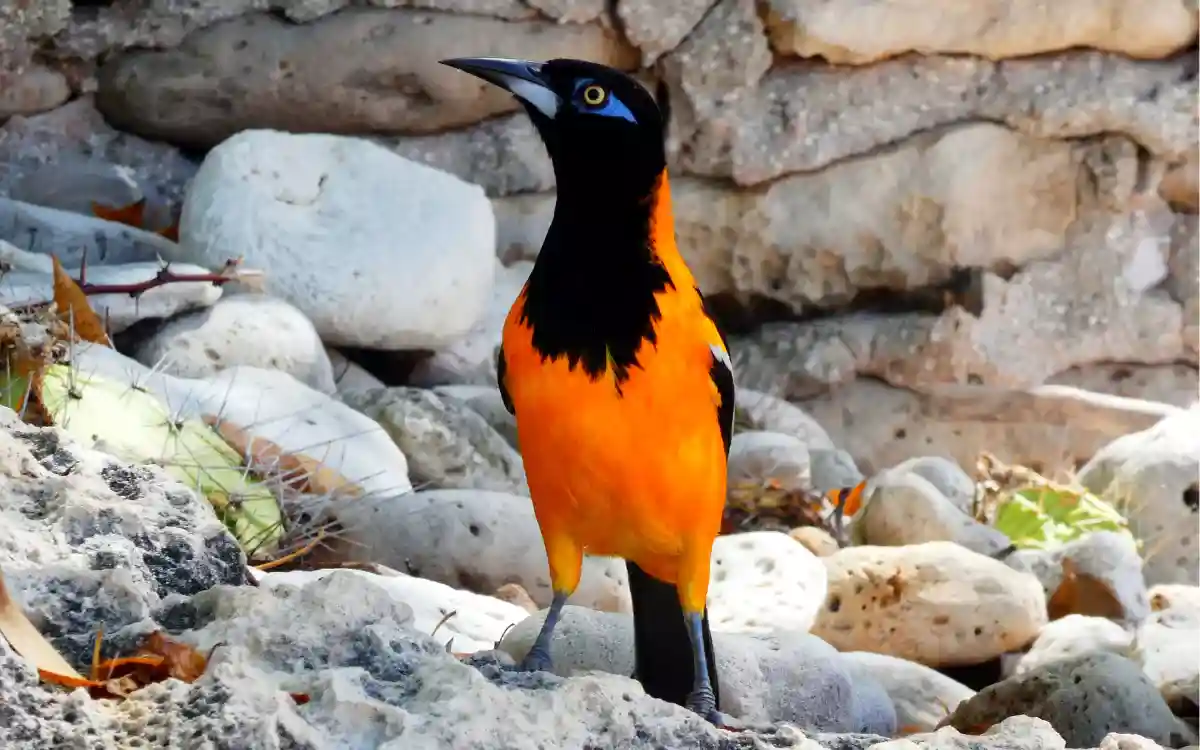Welcome! This guide highlights 20 Birds Black and Orange Like the Baltimore Oriole to the Orange-fronted Barbet. These colorful birds are sure to catch your eye and make birdwatching even more thrilling.
List of 20 Birds Black and Orange:
| Bird Name | Species | Lifespan | Wingspan | Habitat | Diet |
| Baltimore Oriole | Icterus galbula | 7-10 years | 7-8 inches | Deciduous forests, gardens, parks | Insects, fruits, nectar |
| Blackburnian Warbler | Setophaga fusca | 6-10 years | 7-8 inches | Coniferous, mixed forests | Insects, spiders |
| Black-and-Orange Flycatcher | Ficedula nigrorufa | 4-6 years | 8-9 inches | Montane forests | Insects, berries |
| Hooded Oriole | Icterus cucullatus | 6-8 years | 8-9 inches | Woodlands, gardens, orchards | Insects, fruits, nectar |
| Black-Backed Oriole | Icterus abeillei | 7-10 years | 8-9 inches | Tropical forests | Insects, fruits, nectar |
| Black-throated Mango | Anthracothorax nigricollis | 5-7 years | 4-5 inches | Tropical forests, Caribbean | Nectar, insects, spiders |
| Crimson Sunbird | Aethopyga siparaja | 3-5 years | 4-5 inches | Forests, gardens, shrublands | Nectar, insects, spiders |
| Eurasian Golden Oriole | Oriolus oriolus | 6-8 years | 11-12 inches | Woodlands, forests | Insects, fruits, berries |
| Black-headed Grosbeak | Pheucticus melanocephalus | 6-8 years | 10-12 inches | Woodlands, gardens | Insects, seeds, berries |
| Black-winged Oriole | Oriolus nigripennis | 7-10 years | 11-12 inches | Tropical forests | Fruits, insects, small vertebrates |
| Flame Robin | Petroica phoenicea | 3-5 years | 8-9 inches | Woodlands, forests | Insects, spiders |
| Northern Oriole | Icterus galbula | 7-10 years | 7-8 inches | Deciduous forests, gardens | Insects, fruits, nectar |
| Fiery-browed Starling | Enodes erythrophris | 5-8 years | 10-12 inches | Forests, wooded areas | Fruits, insects, small vertebrates |
| Black-naped Oriole | Oriolus chinensis | 8-12 years | 11-12 inches | Woodlands, gardens, urban areas | Fruits, insects, nectar |
| Orange-breasted Sunbird | Anthobaphes violacea | 4-6 years | 4-5 inches | Fynbos, shrublands | Nectar, insects, spiders |
| Rufous-bellied Niltava | Niltava sundara | 4-6 years | 6-7 inches | Montane forests | Insects, berries |
| Scarlet Tanager | Piranga olivacea | 2-3 years | 9-10 inches | Woodlands, forests | Insects, fruits, nectar |
| Spangled Cotinga | Cotinga cayana | 6-8 years | 8-9 inches | Rainforests, wooded areas | Fruits, insects |
| Hooded Pitohui | Pitohui dichrous | 4-6 years | 8-9 inches | Lowland rainforests | Insects, fruits, small vertebrates |
| Orange-fronted Barbet | Capito squamatus | 6-8 years | 6-7 inches | Tropical, subtropical forests | Fruits, insects, small vertebrates |
1.Baltimore Oriole (Icterus galbula):
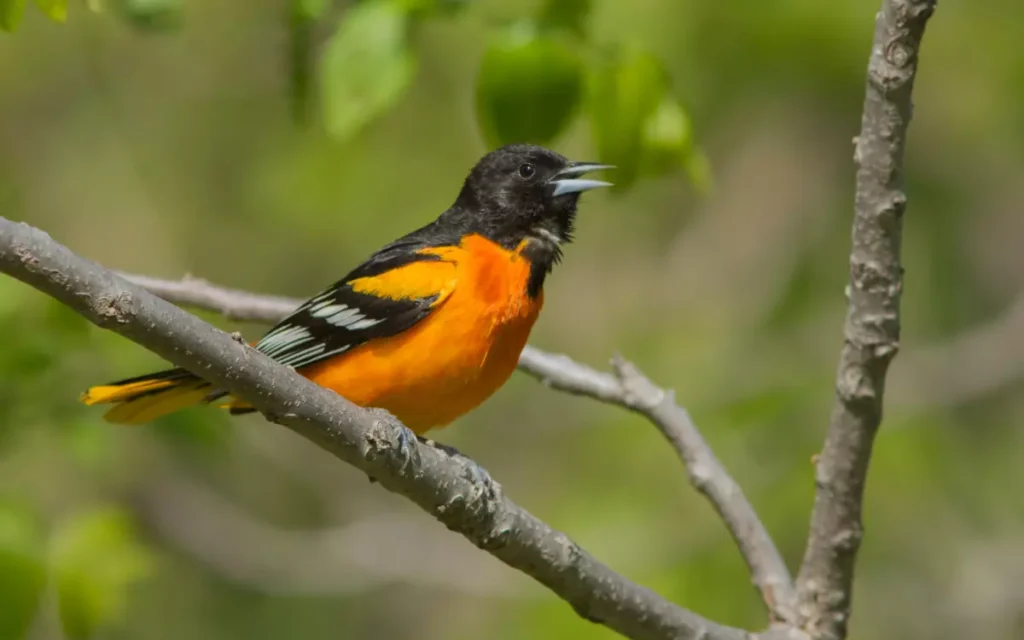
The Baltimore Oriole is a striking songbird known for its vibrant orange plumage and melodious calls. Found in North America, these birds are a delight to observe in the spring and summer.
- Lifespan: 7-10 years
- Wingspan: 7-8 inches
- Habitat: Deciduous forests, gardens, and parks in North America
- Diet: Insects, fruits, and nectar
2.Blackburnian Warbler (Setophaga fusca):
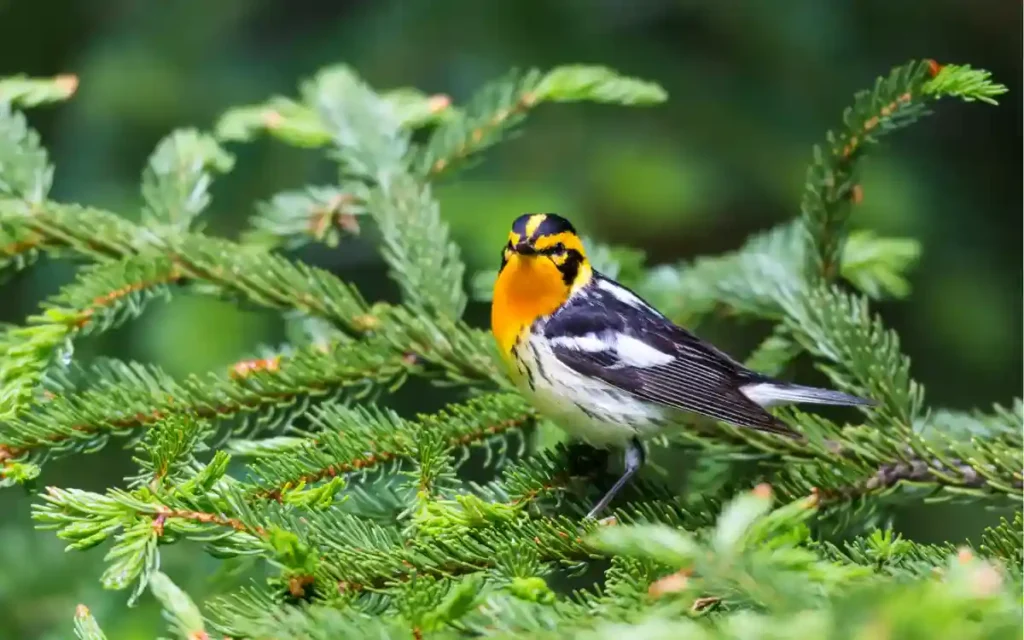
The Blackburnian Warbler stands out with its brilliant orange throat and striking black markings. These agile birds are often seen foraging high in trees as they search for their insect prey.
- Lifespan: 6-10 years
- Wingspan: 7-8 inches
- Habitat: Coniferous and mixed forests in North and Central America
- Diet: Insects and spiders
3. Black-and-Orange Flycatcher (Ficedula nigrorufa):
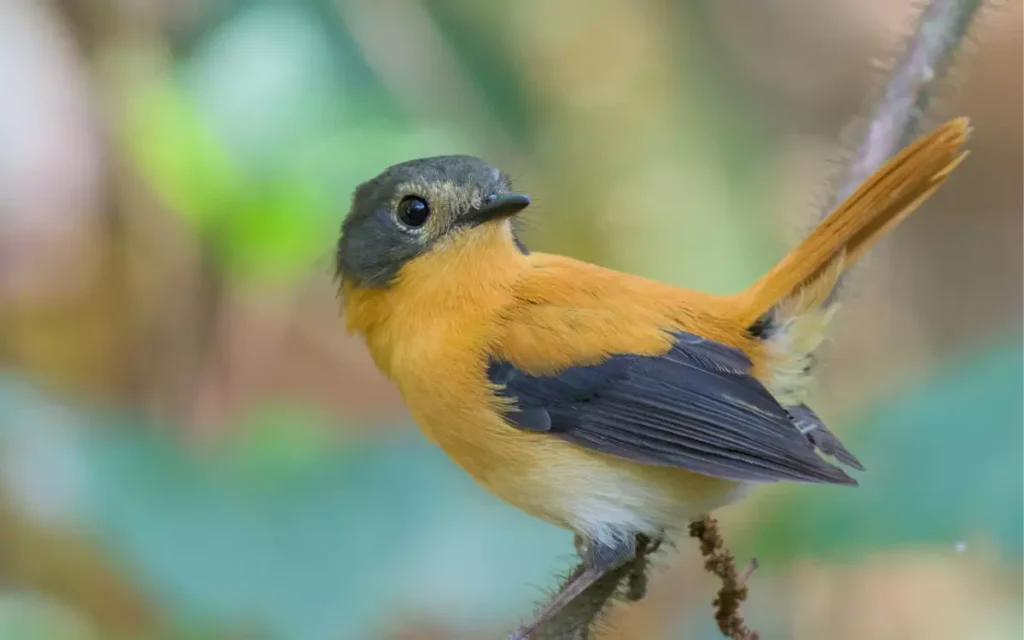
The Black-and-Orange Flycatcher is a small, insect-eating bird found in the forests of Asia. Its distinctive coloring helps it blend in among the lush foliage as it hunts for flying insects.
- Lifespan: 4-6 years
- Wingspan: 8-9 inches
- Habitat: Montane forests in Asia
- Diet: Insects and berries
4.Hooded Oriole (Icterus cucullatus):
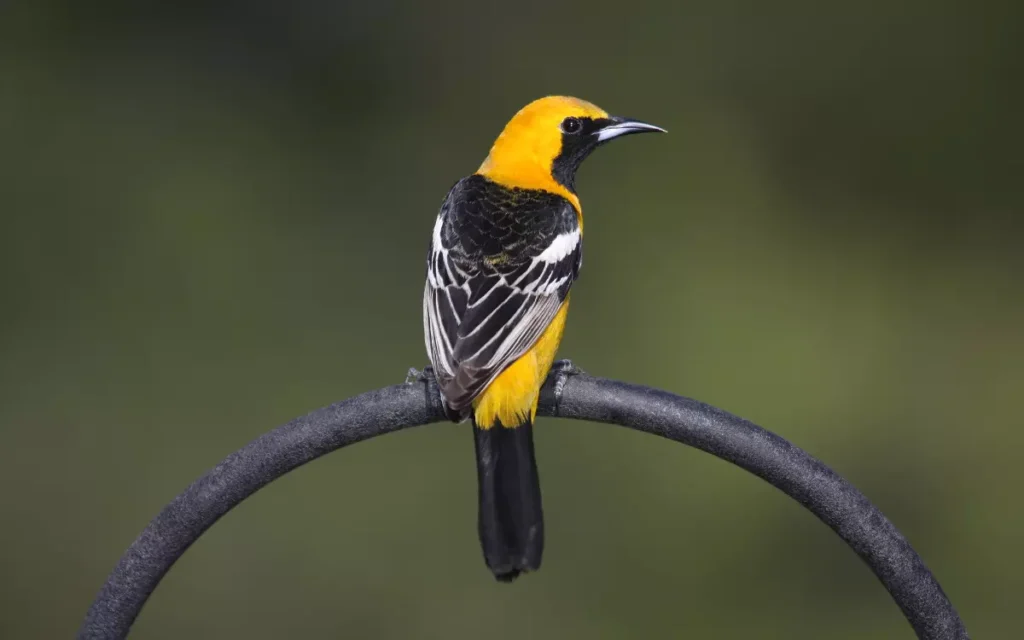
The Hooded Oriole features a striking contrast between its black hood and bright orange body. These birds are known for their intricate hanging nests and melodious songs.
- Lifespan: 6-8 years
- Wingspan: 8-9 inches
- Habitat: Woodlands, gardens, and orchards in North America
- Diet: Insects, fruits, and nectar
5.Black-Backed Oriole (Icterus abeillei):
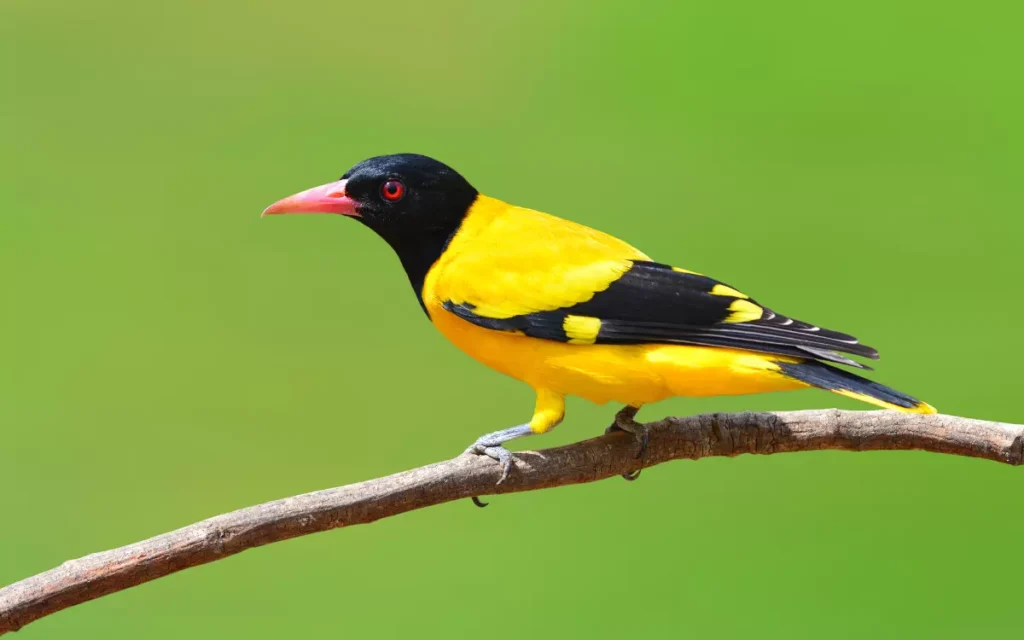
The Black-Backed Oriole is a colorful resident of Central American forests. Its black back and vibrant orange underparts make it a beautiful sight as it flits through the foliage.
- Lifespan: 7-10 years
- Wingspan: 8-9 inches
- Habitat: Tropical forests and woodlands in Central America
- Diet: Insects, fruits, and nectar
Read also:-
- Red, Orange, & Yellow Birds of Wyoming (Photo & call guide)
- 15 Yellow and Black Birds: A Comprehensive Guide
- 25 Birds with Red Heads: A Comprehensive Guide
6.Black-throated Mango (Anthracothorax nigricollis):
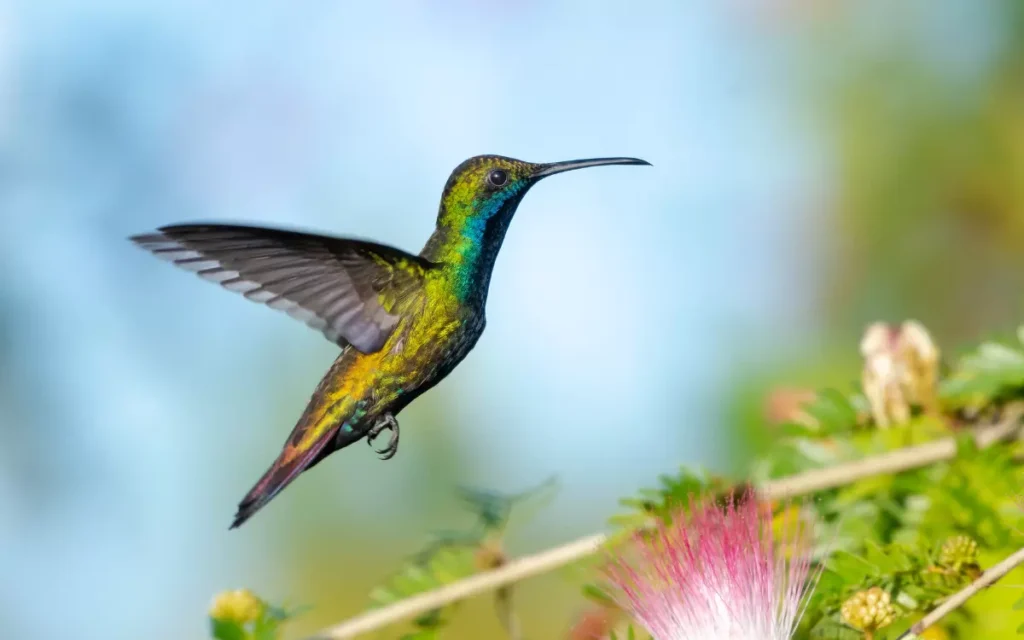
The Black-throated Mango is a hummingbird species with its unique black throat patch and iridescent orange plumage. These agile birds are known for their rapid wing beats as they feed on nectar.
- Lifespan: 5-7 years
- Wingspan: 4-5 inches
- Habitat: Tropical and subtropical forests in the Caribbean
- Diet: Nectar, insects, and spiders
7.Crimson Sunbird (Aethopyga siparaja):
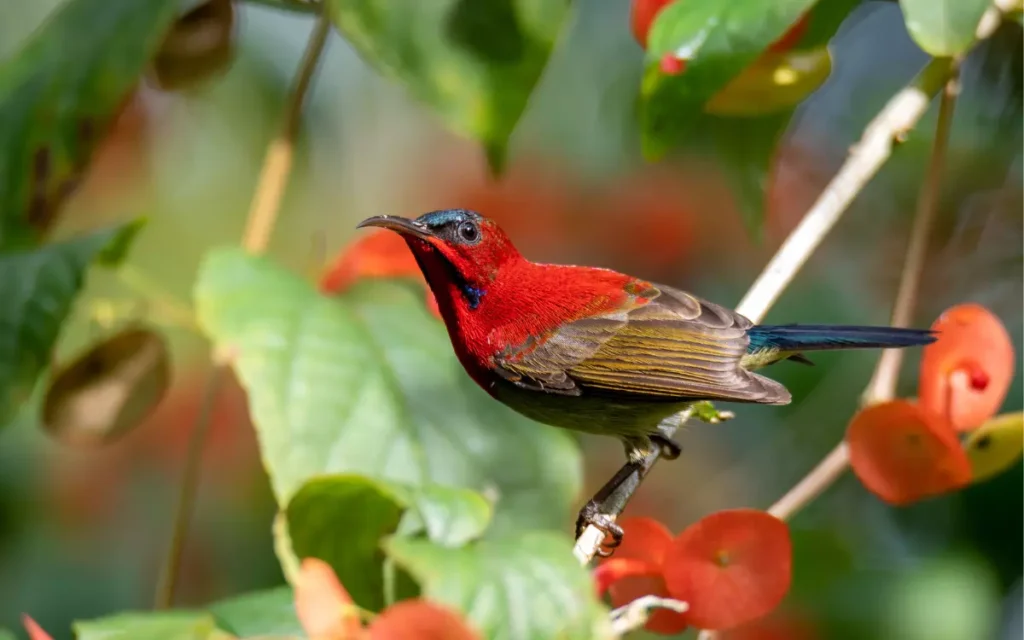
The Crimson Sunbird is a dazzling bird with bright orange and black colors, common in Asian habitats. They are often seen hovering near flowers to feed on nectar.
- Lifespan: 3-5 years
- Wingspan: 4-5 inches
- Habitat: Forests, gardens, and shrublands in Southeast Asia
- Diet: Nectar, insects, and spiders
8.Eurasian Golden Oriole (Oriolus oriolus):
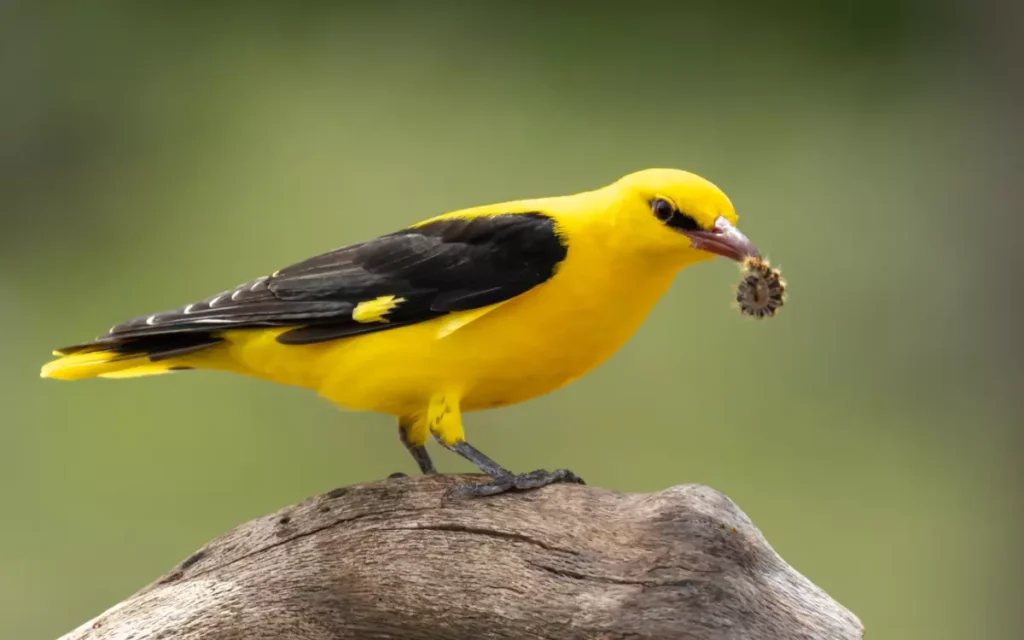
The Eurasian Golden Oriole is a majestic bird with golden-orange plumage and a melodious song. Found across a vast range, these orioles are known for their beautiful calls echoing through the woods.
- Lifespan: 6-8 years
- Wingspan: 11-12 inches
- Habitat: Woodlands and forests across Europe and Asia
- Diet: Insects, fruits, and berries
9. Black-headed Grosbeak (Pheucticus melanocephalus):
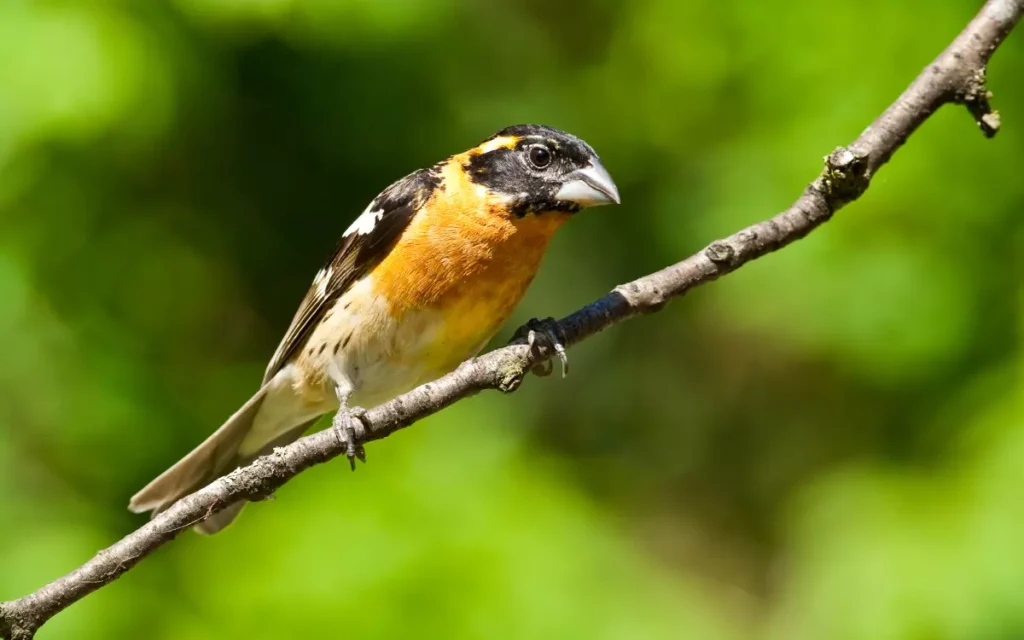
The Black-headed Grosbeak boasts a black head and striking orange underparts. With their powerful beaks, they are adept at cracking open seeds and devouring insects.
- Lifespan: 6-8 years
- Wingspan: 10-12 inches
- Habitat: Woodlands, gardens, and shrublands in North America
- Diet: Insects, seeds, and berries
10. Black-winged Oriole (Oriolus nigripennis):
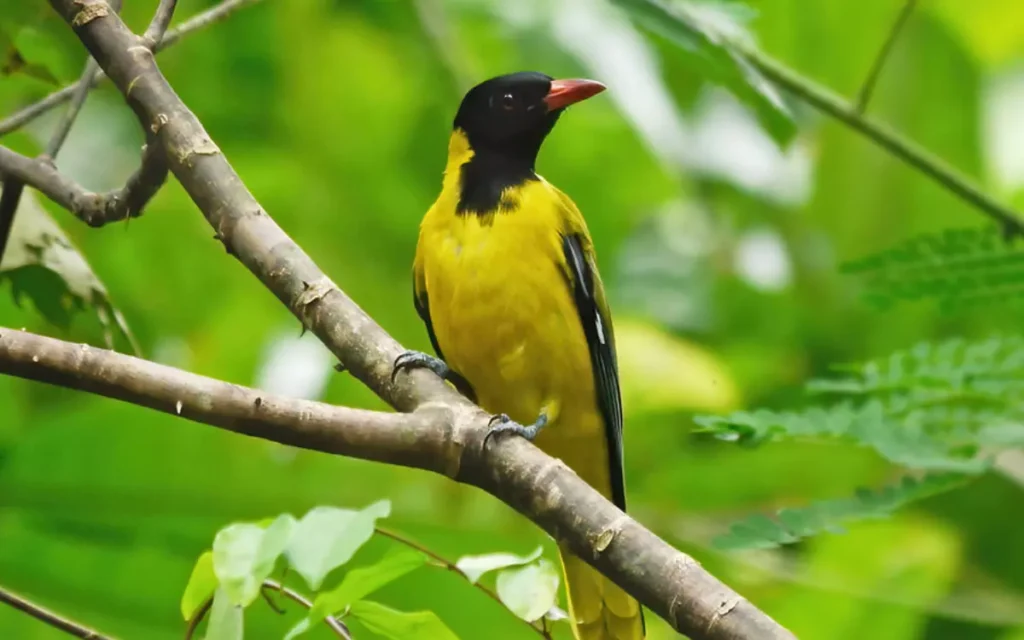
The Black-winged Oriole showcases glossy black wings against a vibrant orange body. These skilled birds are known for their melodious calls that resonate through the dense forests.
- Lifespan: 7-10 years
- Wingspan: 11-12 inches
- Habitat: Tropical forests in Southeast Asia
- Diet: Fruits, insects, and small vertebrates
11.Flame Robin (Petroica phoenicea):
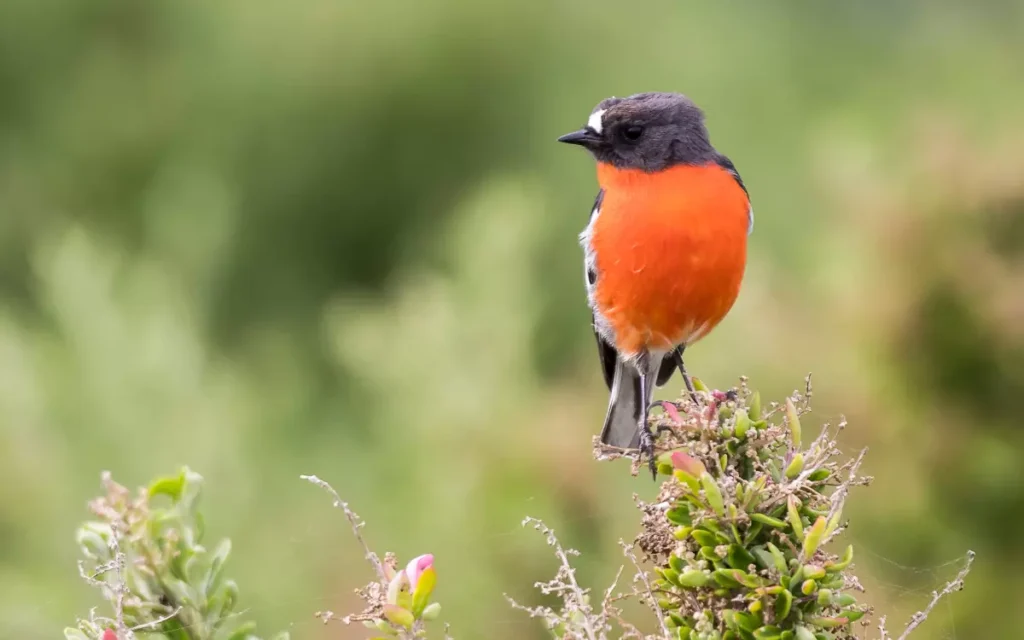
The Flame Robin, with its fiery orange breast and contrasting black markings, is a charismatic species found in the Southern Hemisphere. It’s a frequent sight during its breeding season.
- Lifespan: 3-5 years
- Wingspan: 8-9 inches
- Habitat: Woodlands and forests in Australia and New Zealand
- Diet: Insects and spiders
12. Northern Oriole (Icterus galbula):
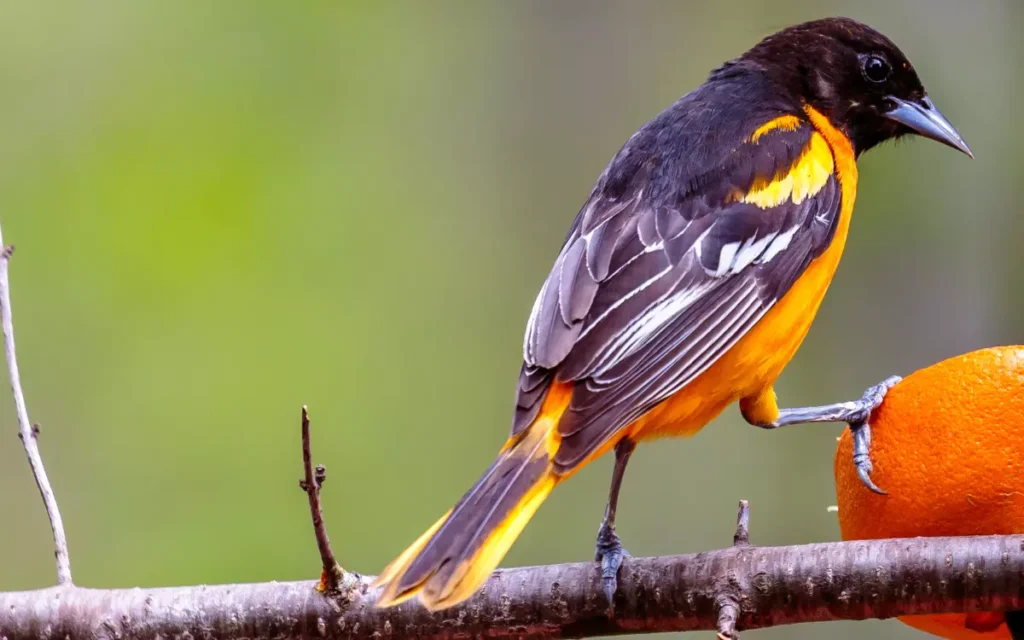
The Northern Oriole’s vibrant orange plumage and melodious songs make it a symbol of North American spring. Their hanging nests are often found swaying in the breeze.
- Lifespan: 7-10 years
- Wingspan: 7-8 inches
- Habitat: Deciduous forests and gardens in North America
- Diet: Insects, fruits, and nectar
13. Fiery-browed Starling (Enodes erythrophris):
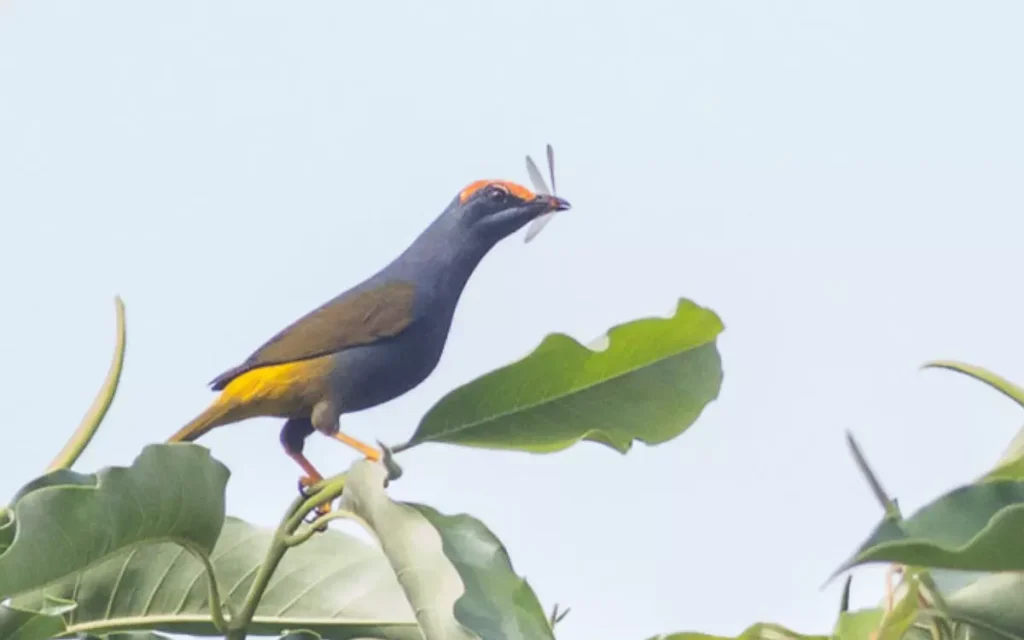
The Fiery-browed Starling is adorned with vibrant orange plumage on its face and underparts. These social birds are often seen in flocks, foraging for a variety of foods.
- Lifespan: 5-8 years
- Wingspan: 10-12 inches
- Habitat: Forests and wooded areas in Southeast Asia
- Diet: Fruits, insects, and small vertebrates
14. Black-naped Oriole (Oriolus chinensis):
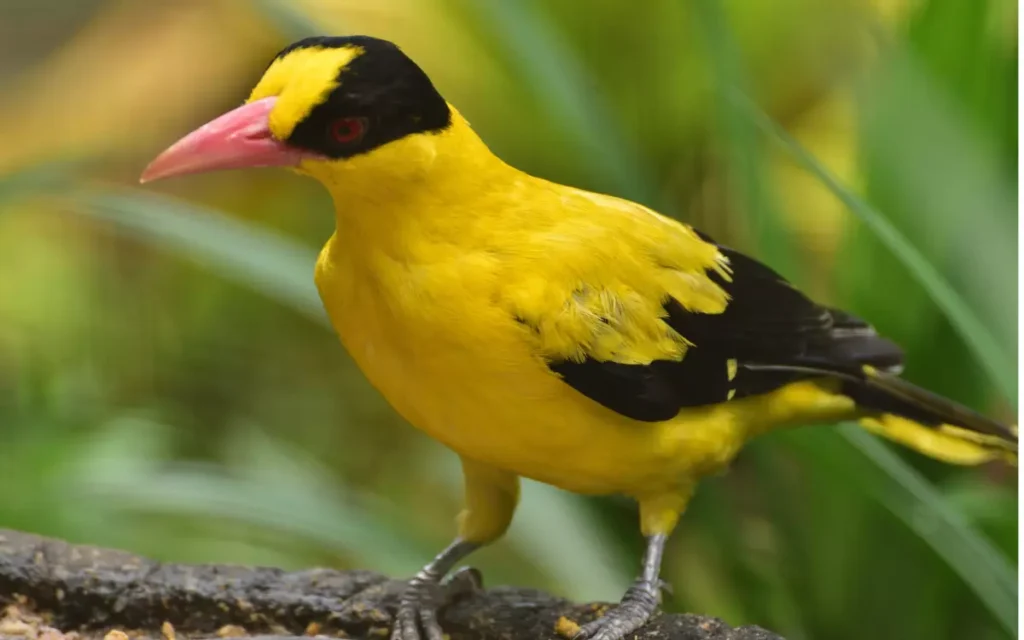
The Black-naped Oriole showcases a striking contrast between its black nape and bright orange-yellow body. Their melodious calls are a common sound in Asian landscapes.
- Lifespan: 8-12 years
- Wingspan: 11-12 inches
- Habitat: Woodlands, gardens, and urban areas in Asia
- Diet: Fruits, insects, and nectar
15.Orange-breasted Sunbird (Anthobaphes violacea):
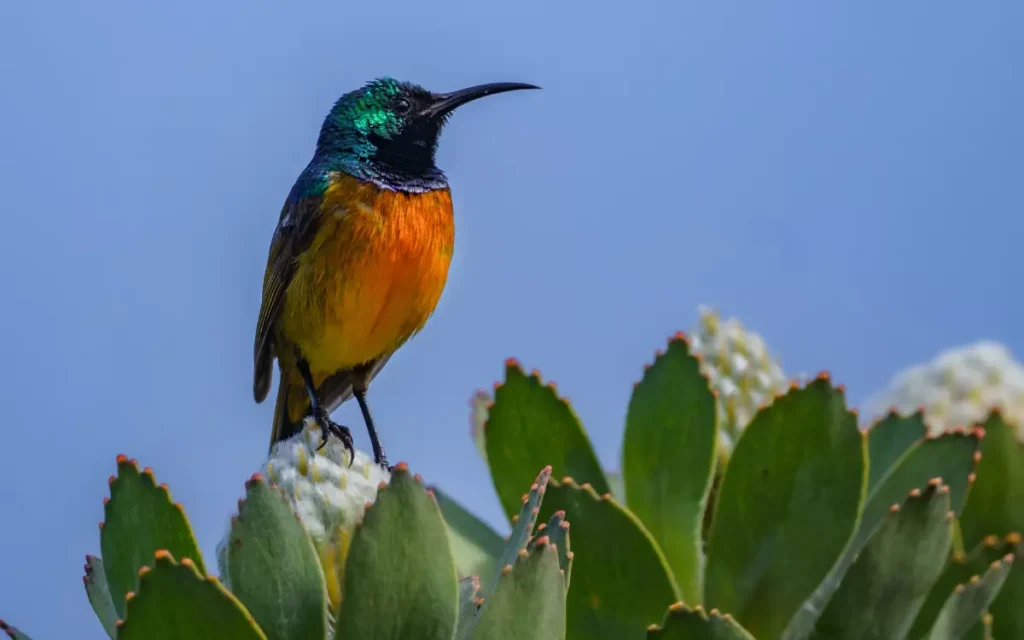
The Orange-breasted Sunbird is a jewel-like bird endemic to South Africa, featuring an iridescent orange breast and a long, curved bill for feeding on nectar.
- Lifespan: 4-6 years
- Wingspan: 4-5 inches
- Habitat: Fynbos and shrublands in South Africa
- Diet: Nectar, insects, and spiders
16. Rufous-bellied Niltava (Niltava sundara):
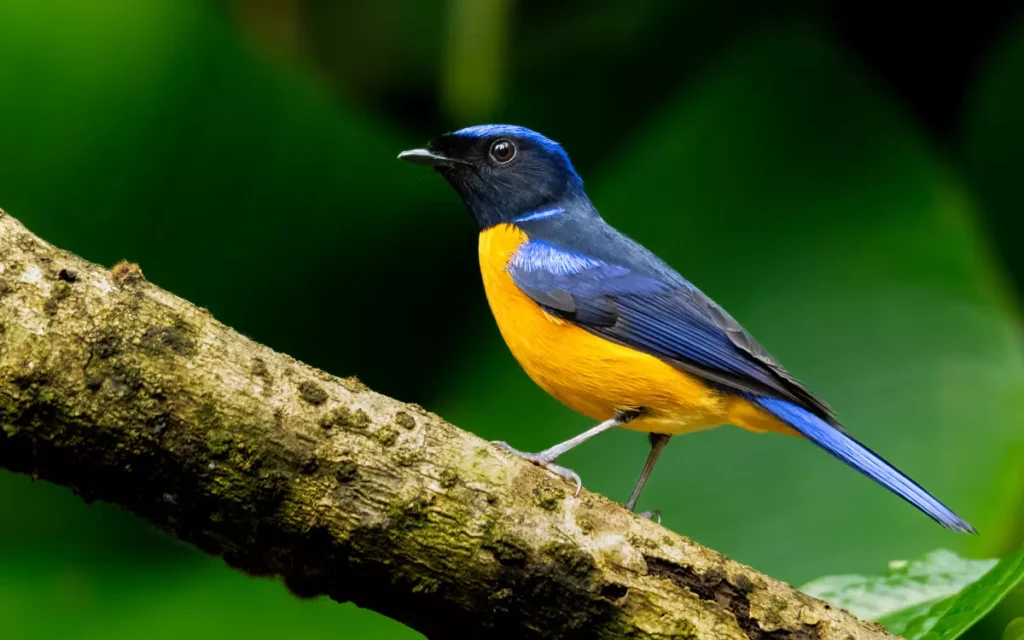
The Rufous-bellied Niltava is known for its striking orange underparts and contrasting black and white markings. It flits through Asian forests, hunting insects and berries.
- Lifespan: 4-6 years
- Wingspan: 6-7 inches
- Habitat: Montane forests in Asia
- Diet: Insects and berries
17. Scarlet Tanager (Piranga olivacea):
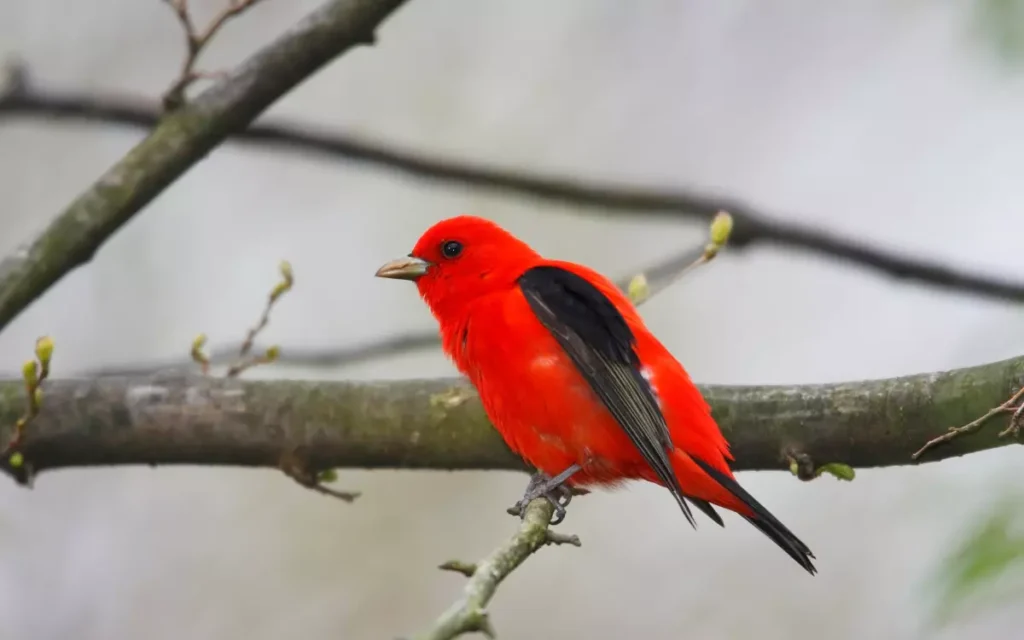
The Scarlet Tanager is a brilliantly colored bird with vibrant orange-red plumage. Migrating from Central America to breed in North America, these tanagers are a vibrant sight among the trees.
- Lifespan: 2-3 years
- Wingspan: 9-10 inches
- Habitat: Woodlands and forests in North and Central America
- Diet: Insects, fruits, and nectar
18. Spangled Cotinga (Cotinga cayana):
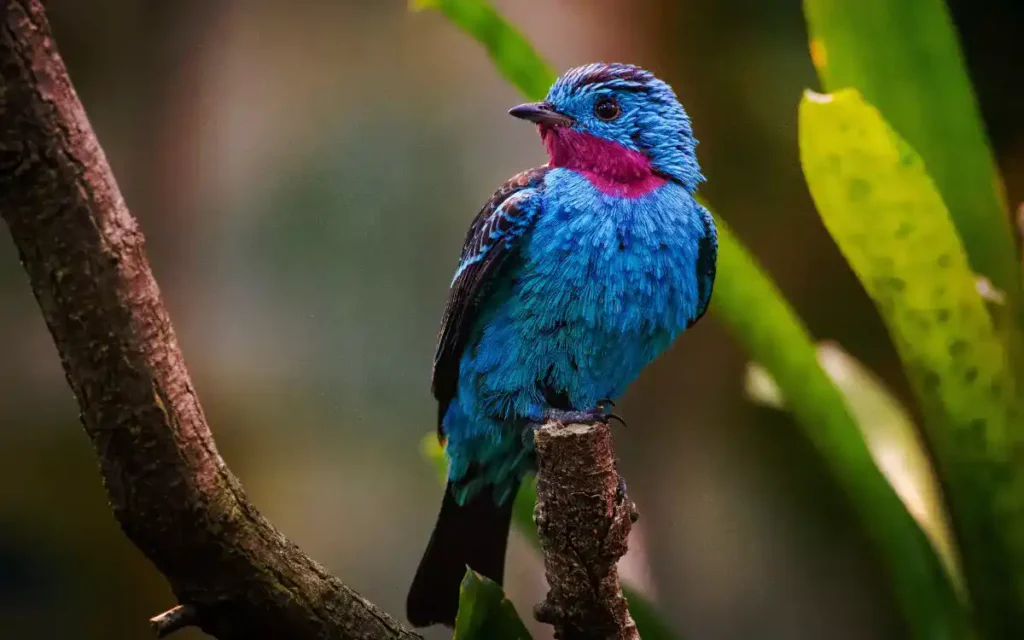
The Spangled Cotinga is a captivating bird found in the lush rainforests of South America. Its striking black and orange plumage makes it a sought-after sight for birdwatchers.
- Lifespan: 6-8 years
- Wingspan: 8-9 inches
- Habitat: Rainforests and wooded areas in South America
- Diet: Fruits and insects
19. Hooded Pitohui (Pitohui dichrous):
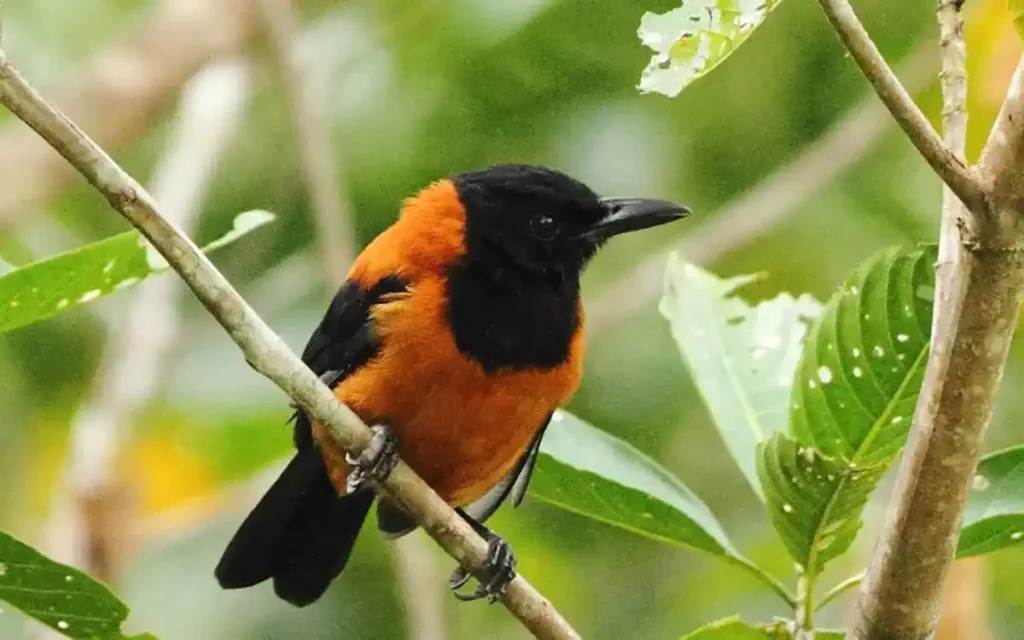
The Hooded Pitohui is known for its unique coloration, featuring a combination of black, orange, and white. However, it’s important to note that this species carries potent toxins in its skin and feathers.
- Lifespan: 4-6 years
- Wingspan: 8-9 inches
- Habitat: Lowland rainforests in New Guinea
- Diet: Insects, fruits, and small vertebrates
20.Orange-fronted Barbet (Capito squamatus):
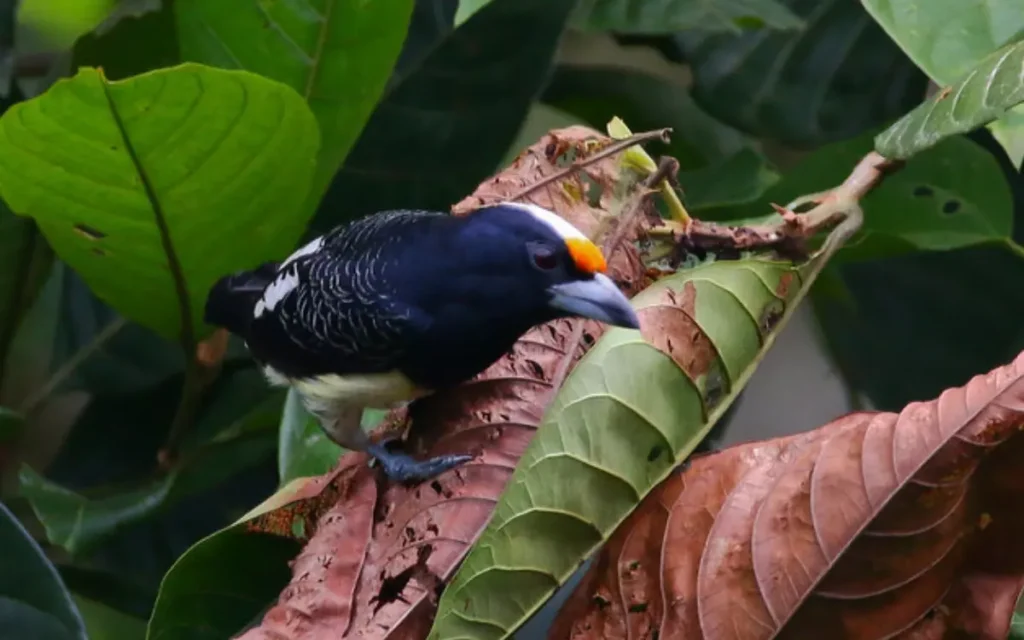
The Orange-fronted Barbet is a distinctive bird with a bright orange face and vivid plumage. These barbets play important roles in seed dispersal within their forest habitats.
- Lifespan: 6-8 years
- Wingspan: 6-7 inches
- Habitat: Tropical and subtropical forests in South America
- Diet: Fruits, insects, and small vertebrates
Frequently Asked Questions:
Q: Which bird is black and orange?
Ans: The Baltimore Oriole is a prominent bird that features a striking black and orange coloration.
Q: What bird has an orange and black face?
Ans: The Black-headed Grosbeak has a distinctive orange and black face, making it easily recognizable.
Q: What kind of bird is black with orange on the side of its head?
Ans: The Eastern Towhee has a notable appearance with black feathers and a splash of orange on the sides of its head.
Q: Which bird has black and orange wings?
Ans: The Spotted Towhee displays black and orange in its wings, particularly noticeable during flight.
Q: What bird has a black body and orange underparts?
Ans: The male American Redstart has a mostly black body with vivid orange patches on its sides and wings.
Q: Which small bird has black and orange plumage?
Ans: The Blackburnian Warbler is a small bird known for its intense orange throat and black upper parts.
Conclusions:
Analyzing 20 black and orange birds has shown us the amazing combination and striking colors of these feathered friends. Each species offers special qualities that make birdwatching exciting. Remember, these birds are not just beautiful; they play important roles in our ecosystems.

